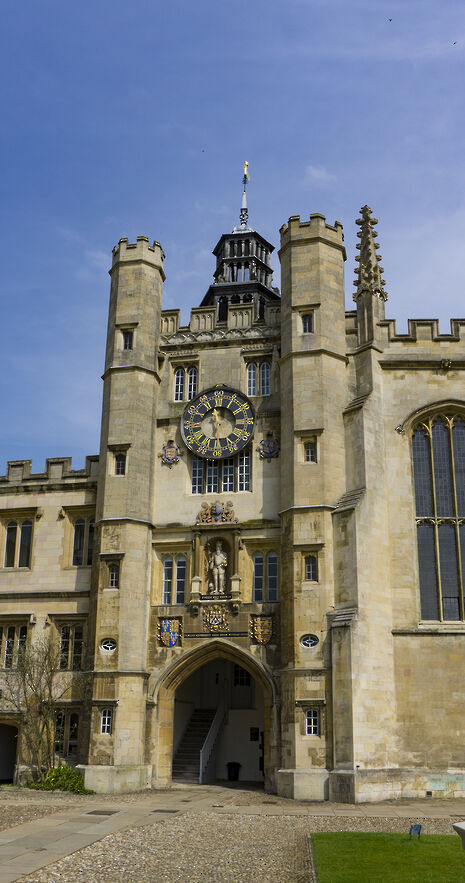Analysis: What we can learn from the Tompkins Table
The latest college exam result rankings are in – so what does the data tell us?

The Tompkins Table 2016, published exclusively by Varsity, offers us some insight into the factors which influence college performances. Though it’s important to note that the range of results is actually very narrow – all colleges except Trinity fall within nine per cent of one another – there are still some interesting trends which are revealed.
Trinity stays on top
It likely comes with little surprise that, once again, Trinity reigns supreme for yet another year. No doubt the typical explanation will surface that Trinity’s dominance is due to admitting a ‘ton of mathmos’ more likely to receive Firsts. And it is true that Trinity admits a lot of Mathematics students, approximately a fifth of its intake every year. By comparison, Pembroke, Christ’s and Emma – who occupy the top rankings behind Trinity - tend to make 10 per cent or less of their offers to mathmos.
However, it’s hard to claim that simply studying Mathematics increases your chance of a First, because the proportion awarded that grade in this Tripos in 2015 (33 per cent, if you’re interested) was similar to the amount of top marks awarded by History, English and Computer Science. Given that over a quarter of Firsts in Mathematics are awarded to Trinitarians, it is more realistic to assume that Trinity is better resourced or, as an oversubscribed college, has the luxury to pick students who achieved the very highest grades at school and are better placed to do well from day one. Indeed, one criticism of the Tompkins Table is that it fails to measure the ‘value-added’ by colleges, as it does not track the progress of students.

Cash rules everything about marks
Is there a link between the cash colleges receive and their academic performance? Well, the fact that, this year, the college with the largest endowment came top, and the college with the smallest came bottom, superficially suggests that there is a link between funding and attainment. At the very least there seems to be a moderate correlation, with seven of the top ten within the Tompkins also being among the top ten richest colleges, which includes Christ’s, Emma and St. John’s.
Towards the other end, six of the seven ‘poorest’ colleges appear in the bottom ten of the Tompkins rankings. Of course, no hard and fast conclusions can be drawn, given that the size of a college’s endowment provides no definite answer as to the amount of money it spends on each student’s education.
It ain’t where you’re from, it’s where you’re at – or is it?
When it comes to the significance of educational background, it is noteworthy that of the ten colleges that admit the most independent school students in proportion to their overall annual intake, eight are also in the top ten of the Tompkins Rankings. For example, Emmanuel, St John’s and Pembroke – who came 4th, 5th and 2nd respectively in this year’s Tompkins Table – also had the third-, sixth- and eighth-highest independent school intakes. Of the ten colleges with the lowest proportions of independent school students as part of their intake, seven are also in the bottom ten of the Tompkins Table. It is worth noting however that mature colleges typically take in fewer students directly from conventional UK schooling.
Once again mature colleges and women’s colleges have found themselves towards the bottom of the rankings, with Wolfson placing the highest of either group at 20th place. Of the ten colleges furthest away from central Cambridge, eight are among the bottom ten of the Tompkins rankings.
 Comment / Plastic pubs: the problem with Cambridge alehouses 5 January 2026
Comment / Plastic pubs: the problem with Cambridge alehouses 5 January 2026 News / Cambridge businesses concerned infrastructure delays will hurt growth5 January 2026
News / Cambridge businesses concerned infrastructure delays will hurt growth5 January 2026 News / New movement ‘Cambridge is Chopped’ launched to fight against hate crime7 January 2026
News / New movement ‘Cambridge is Chopped’ launched to fight against hate crime7 January 2026 News / AstraZeneca sues for £32 million over faulty construction at Cambridge Campus31 December 2025
News / AstraZeneca sues for £32 million over faulty construction at Cambridge Campus31 December 2025 Interviews / You don’t need to peak at Cambridge, says Robin Harding31 December 2025
Interviews / You don’t need to peak at Cambridge, says Robin Harding31 December 2025









